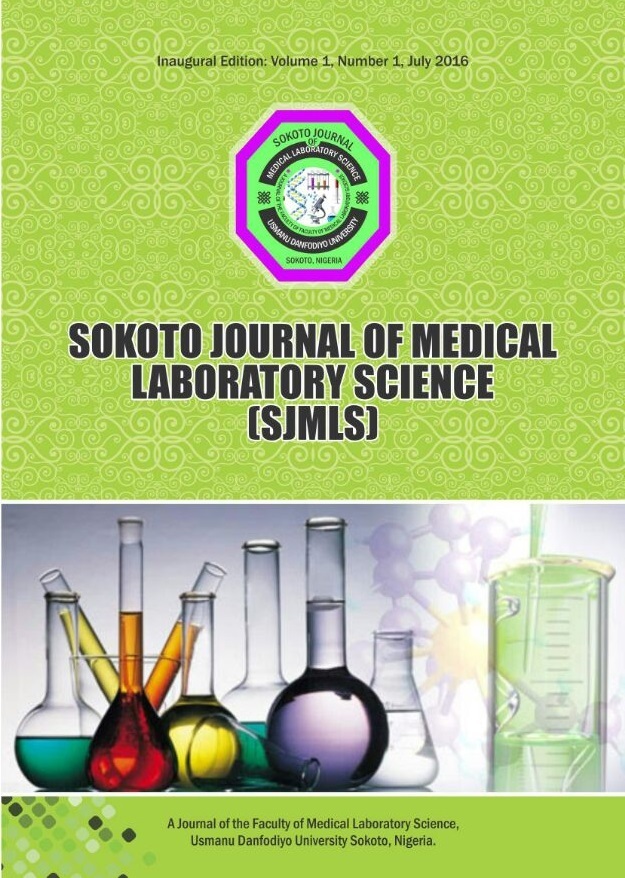Evaluation of Lipid Profile and Troponin-I as Predictors of Cardiovascular Disorders among Young Adults in Ado-Ekiti
DOI:
https://doi.org/10.4314/sokjmls.v9i2.16Keywords:
Lipid Profile, Troponin-I, Cardiovascular Disorders, Young Adults, Ado-EkitiAbstract
Cardiovascular diseases (CVDs) remain a leading cause of morbidity and mortality worldwide, presenting a significant public health challenge. It encompasses a spectrum of conditions affecting the heart or blood vessels. This study aimed to evaluate the Lipid Profile and Troponin-I as Predictors of Cardiovascular Disorders among Young Adults in Ado-Ekiti, Nigeria. The objectives included investigating dyslipidemia and elevated Troponin - I prevalence, examining contributing factors, exploring Lipid profile-CVD risk associations, assessing Troponin-I-CVD risk factor correlations, and comparing predictive powers. Ethical approval and informed consent were obtained. Clinical assessments and blood samples were collected for Lipid Profile and Troponin-I analysis. A cross-sectional design was used with 384 participants aged 18-45 years. SPSS software was used for statistical analysis. The age distribution showed that 19.50% were aged 18 - 28, 45.60% were aged 28 - 38, and 34.90% fell within the 38 – 48 age range. The mean age and standard deviation for each age group were provided, with statistical tests indicating significant differences between the groups (p <0.05, F = 1217.461). Participants with “AT RISK” of CVD exhibited higher mean Cardiovascular Risk Ratio (CRR) scores (7.0341 ± 2.52) compared to those with “NO RISK” (3.1531 ± 0.34). Logistic regression analysis identified Total cholesterol as a significant predictor of CVD risk (B = 0.902, p < 0.05, Exponentiated Coefficient (B) = 2.464),
while Troponin-I did not significantly predict risk (B = -0.203, p = 0.366, Exponentiated Coefficient (B) = 0.816). Multivariate analysis demonstrated that the predictor variables collectively provided a good fit to the data (Wald = 62.048, df = 6, p < 0.05). Total cholesterol emerged as a significant CVD risk predictor. Troponin-I's role warrants further investigation. Findings emphasize the multifactorial nature of CVD risk and the importance of comprehensive assessments for accurate prediction and management.




